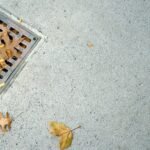In the realm of health and wellness, understanding the mechanisms behind fat accumulation and decay is crucial for effectively managing body composition and achieving desired aesthetic goals. Fat cavitation, also known as ultrasonic cavitation, has emerged as a non-invasive technique aimed at reducing localized fat deposits. In this in-depth exploration, we will delve into the science behind fat accumulation, the principles of fat cavitation, and its role in sculpting the body.
The Science of Fat Accumulation
1.1 Anatomy of Fat Cells:
- Adipose Tissue: Fat tissue, known as adipose tissue, comprises adipocytes, or fat cells, along with connective tissue and blood vessels.
- Subcutaneous vs. Visceral Fat: Understanding the difference between subcutaneous fat (located beneath the skin) and visceral fat (found around internal organs) is essential for assessing health risks associated with excess fat accumulation.
1.2 Mechanisms of Fat Accumulation:
- Energy Balance: The fundamental principle of weight management revolves around energy balance, wherein caloric intake must match energy expenditure to prevent excess fat storage.
- Lipogenesis: Excess calories are converted into triglycerides through lipogenesis and stored within fat cells, leading to adipocyte hypertrophy (enlargement) and, eventually, weight gain.
- Hormonal Regulation: Hormones such as insulin, leptin, and cortisol play pivotal roles in regulating appetite, metabolism, and fat storage.
1.3 Factors Influencing Fat Accumulation:
- Diet and Nutrition: Consumption of high-calorie, nutrient-poor foods, along with excessive sugar and fat intake, contributes to fat accumulation.
- Physical Activity: Sedentary lifestyles and lack of regular exercise impede energy expenditure and promote fat storage.
- Genetics and Metabolism: Genetic predispositions and metabolic factors influence individual susceptibility to weight gain and fat accumulation.
Part 2: Understanding Fat Cavitation
2.1 Principles of Fat Cavitation:
- Ultrasonic Waves: Fat cavitation utilizes low-frequency ultrasound waves to disrupt fat cell membranes, leading to the release of triglycerides into the extracellular fluid.
- Cavitation Effect: Ultrasonic waves create microscopic bubbles within fat tissue, causing localized pressure changes and mechanical disruption of adipocytes.
- Lipolysis and Lymphatic Drainage: Freed triglycerides undergo enzymatic breakdown (lipolysis) and are transported via the lymphatic system for metabolism and excretion by the body.
2.2 Procedure and Technique:
- Treatment Areas: Fat cavitation can target various body areas prone to localized fat accumulation, including the abdomen, thighs, hips, buttocks, and arms.
- Non-Invasive Nature: Unlike surgical procedures such as liposuction, fat cavitation is non-invasive, requiring no incisions, anesthesia, or downtime.
2.3 Efficacy and Results:
- Contouring and Sculpting: Fat cavitation offers gradual fat reduction and body contouring effects, leading to a slimmer, more toned appearance.
- Patient Considerations: Individual responses to fat cavitation may vary based on factors such as age, skin elasticity, body composition, and adherence to post-treatment protocols.
Part 3: Health Considerations and Safety Precautions
3.1 Potential Risks and Side Effects:
- Skin Sensitivity: Some individuals may experience temporary redness, swelling, or mild discomfort at the treatment site following fat cavitation.
- Hydration and Detoxification: Adequate hydration and lymphatic support are essential for facilitating the elimination of released fat metabolites and toxins from the body.
- Patient Selection and Screening: Screening for contraindications such as pregnancy, active infections, and certain medical conditions is crucial to ensure the safety and efficacy of fat cavitation treatments.
3.2 Long-Term Maintenance and Lifestyle Factors:
- Sustainable Habits: Incorporating healthy dietary choices, regular exercise, and stress management techniques are essential for maintaining long-term results and preventing fat re-accumulation.
- Holistic Approach: Fat cavitation should be viewed as part of a comprehensive wellness strategy, encompassing holistic lifestyle modifications to support overall health and vitality.
Conclusion:
Fat cavitation offers a promising solution for individuals seeking non-invasive fat reduction and body sculpting. By understanding the underlying mechanisms of fat accumulation and decay, as well as the principles of fat cavitation, individuals can make informed decisions regarding their aesthetic goals and overall well-being. However, it’s essential to approach fat cavitation as a complement to healthy lifestyle practices, emphasizing sustainable habits for optimal results and long-term success.





